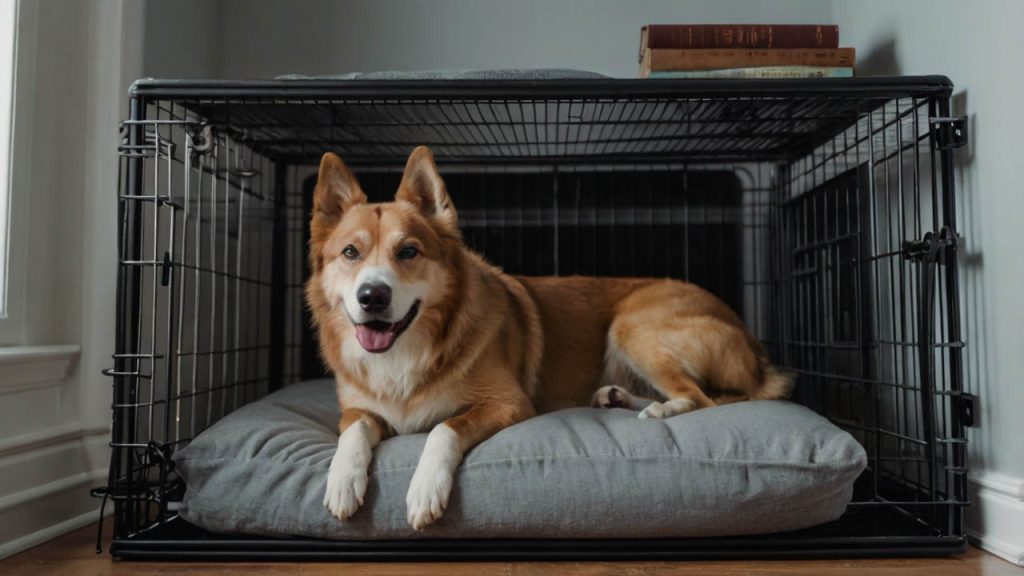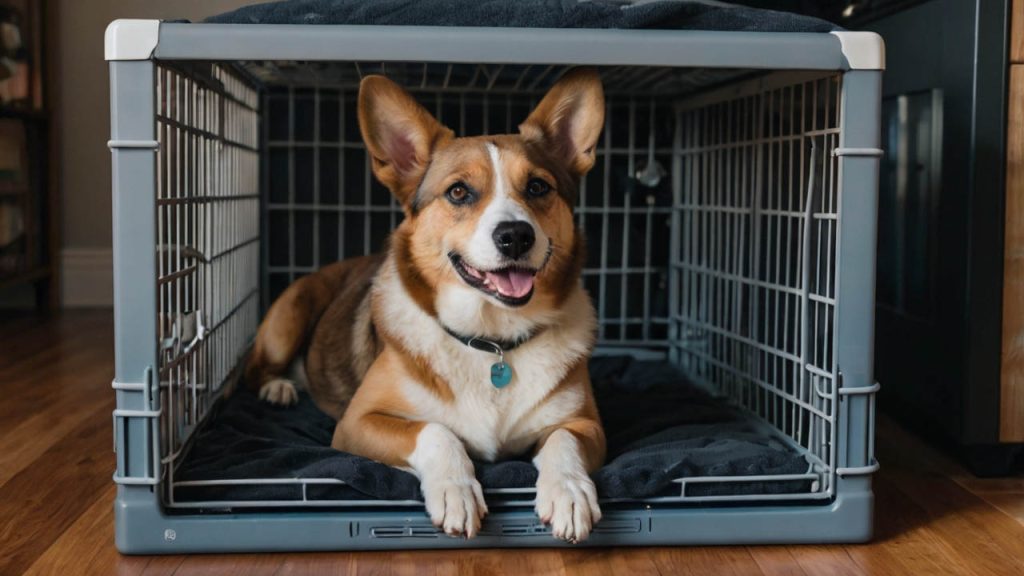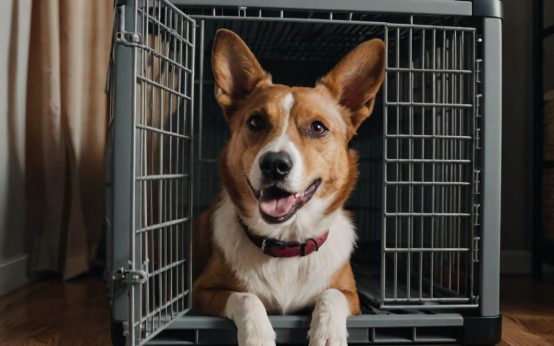The Ultimate Guide to a High Anxiety Dog Crate: Safety, Selection, and Sanity
Have you ever come home to find your dog has miraculously escaped their “secure” wire crate, leaving behind a trail of bent bars, broken latches, and sometimes, even blood? If you’re nodding along, you understand the terrifying reality of a dog whose panic is stronger than steel. For these dogs, a standard crate isn’t a safe den; it’s a flimsy cage they are desperate to flee. This is where the concept of a high anxiety dog crate becomes not just a helpful tool, but a life-saving necessity.
Let me tell you about a client’s dog, a rescue named Riley. Riley was a sweet, gentle giant of a dog—until he was left alone. He’d destroyed three different wire crates, once breaking a tooth and tearing his paws in the process. His owner was at her wit’s end, terrified he would seriously injure himself. Riley didn’t need just another crate; he needed a fortress. He needed a high anxiety dog crate.
This article is your complete roadmap. We’re going to break down what a high anxiety dog crate actually is, why it’s a critical safety measure, how to choose the right one, and—most importantly—the essential training that must accompany it. Because here’s the secret: the crate is only 10% of the solution. The other 90% is you.
What Exactly Is a High Anxiety Dog Crate?
Let’s be clear: a high anxiety dog crate is not your average pet store kennel. Think of it less as a dog bed with a door and more as a purpose-built safe room for your canine companion. These crates are specifically engineered to contain a dog experiencing extreme anxiety or panic, particularly separation anxiety or confinement phobia.
Unlike standard wire or plastic crates that can be bent, broken, or chewed through by a determined dog, a high anxiety dog crate is constructed from heavy-duty materials designed to withstand a panic-fueled escape attempt. However, it’s crucial to understand that this is a management tool to ensure safety, not a cure for the underlying anxiety.
Key Features of a High Anxiety Dog Crate
When you start shopping, you’ll notice these crates have distinct features. They are built for security and safety above all else.
- Heavy-Gauge Materials: Most are constructed from thick, welded steel or high-grade aluminum that cannot be bent or chewed.
- Escape-Proof Design: Look for solid, single-piece construction, rivet-free surfaces, and slam latches that a dog cannot manipulate.
- Proper Ventilation: Despite their fortress-like appearance, a well-designed high anxiety dog crate has ample ventilation holes or bars to ensure proper airflow without creating weak points.
- Smooth Interior: There should be no sharp edges, exposed screws, or gaps where a dog could get a paw or tooth stuck.

Why a Standard Crate Is Dangerous for a High Anxiety Dog
For a calm dog, a wire crate is a perfectly fine den. But for a dog in a state of panic, it becomes a dangerous trap. The American Society for the Prevention of Cruelty to Animals (ASPCA) warns that dogs with separation anxiety can seriously injure themselves trying to escape confinement.
When a dog like Riley manages to bend the bars and squeeze out, two things happen: first, they can suffer significant physical harm. Second, the escape is successful, which powerfully reinforces the frantic behavior. The dog learns, “If I panic hard enough, I can get out.” This makes the problem exponentially worse.
The Unseen Risks of Using the Wrong Crate for a High Anxiety Dog
The stakes are incredibly high. Using a flimsy crate for a truly anxious dog can lead to:
- Severe Oral Injury: Dogs can break their teeth on wire bars.
- Paw and Nail Damage: Frantic digging and pulling can tear paws and rip out nails.
- Strangulation Risk: Dogs have gotten their collars or heads caught in bent crate bars.
- Worsened Psychological Trauma: Each frantic escape deepens the confinement phobia and overall anxiety.
Choosing the Right High Anxiety Dog Crate for Your Pet
Investing in a high anxiety dog crate is a significant financial decision, so it’s vital to get it right. You are buying a piece of safety equipment, so treat the selection process with that level of seriousness.
Measuring for the Perfect High Anxiety Dog Crate
Size matters—a lot. A crate that’s too large allows a dog to get a running start to ram the door, while one that’s too small is uncomfortable and can increase feelings of confinement.
- The Rule of Thumb: Your dog should be able to stand up, turn around, and lie down comfortably.
- How to Measure:
- Length: Measure your dog from the tip of their nose to the base of their tail. Add 2-4 inches.
- Height: Measure your dog from the floor to the top of their head while they are sitting. Add 2-4 inches.
Comparing Top Materials for a High Anxiety Dog Crate
Most heavy-duty crates are made of steel or aluminum. Here’s a quick breakdown:
| Material | Pros | Cons | Best For |
|---|---|---|---|
| Powder-Coated Steel | Extremely durable, often heavier and more stable, typically less expensive. | Can be very heavy, may rust if the coating is chipped. | Maximum security, dogs who try to physically move the crate. |
| Aluminum | Lighter weight, corrosion-resistant, often used in airline-approved crates. | Usually more expensive, can be dented by extreme force. | Travel, owners who need to move the crate, humid climates. |
Essential Safety Features in a High Anxiety Dog Crate
Look past the marketing and inspect the details. A secure high anxiety dog crate must have:
- Weld Seams: Welded corners are infinitely stronger than those held together by screws or bolts.
- Slam Latches: These latches lock automatically when the door is closed and cannot be easily manipulated by a dog’s nose or paws.
- Integrated Door Hinges: Piano-style hinges or other integrated designs prevent the door from being a weak point.
The Most Important Step: Training with a High Anxiety Dog Crate
I cannot stress this enough: you cannot buy a high anxiety dog crate, put your dog in it, and expect the problem to be solved. Doing so will likely make the fear worse. The crate is a safety net that allows you to conduct behavior modification without worrying about injury. The training is everything.
You must re-introduce this new crate as the best place on earth.
Re-introducing the High Anxiety Dog Crate as a Safe Haven
You are starting from square one. Forget everything your dog thought they knew about crates.
- Make it a Palace: Place the new high anxiety dog crate in a quiet, low-traffic area of your home. Put the most comfortable bedding inside.
- The Open-Door Policy: For the first week (or longer), the crate door does not close. Ever.
- Feed All Meals Inside: Place your dog’s food bowl at the very back of the crate. Let them walk in, eat, and walk out freely.
- Jackpotting: Randomly walk by and toss extremely high-value treats (think cheese, hot dogs, steak) into the crate for your dog to find. You want them to think, “Good things just appear in here!”
- Exclusive Toys: Get a few special puzzle toys (like a Kong) that are filled with something irresistible. These toys only come out when your dog is in the crate.
Expert Quote: Famed animal behaviorist Dr. Karen Overall emphasizes a “protocol for relaxation.” The goal of this initial training is to teach the dog that the crate is a place for calm, not panic.

Avoiding Common Mistakes with a High Anxiety Dog Crate
- Mistake #1: Rushing the Process. This is the number one reason for failure. If your dog shows any hesitation, you are moving too fast. Go back to the last step where they were successful.
- Mistake #2: Using It for Punishment. Never send your dog to the crate for being “bad.” It must always be a voluntary, positive space.
- Mistake #3: The Marathon Session. Your first closed-door sessions should last for seconds, not hours. Close the door, drop a treat, open the door. Repeat. Slowly build duration.
Integrating the High Anxiety Dog Crate into a Full Behavior Plan
The crate is just one piece of the puzzle. It must be part of a comprehensive plan to address the root separation anxiety in dogs. This involves a combination of management, enrichment, and behavior modification.
A Certified Separation Anxiety Trainer (CSAT) or a board-certified veterinary behaviorist (DACVB) can be an invaluable resource. You can find one through directories like the Malena DeMartini’s CSAT Directory or the American College of Veterinary Behaviorists.
Quick Tip Box:
Use a Camera! A simple Wi-Fi pet camera is your most powerful training tool. It allows you to monitor your dog’s body language and return before they panic. This prevents them from practicing anxious behaviors and helps you find their exact threshold.
Case Study: How a High Anxiety Dog Crate Saved Riley
Let’s circle back to Riley. After the third destroyed crate, his owner invested in a heavy-duty steel high anxiety dog crate.
- Week 1-2: The crate sat in the living room with the door open. All of Riley’s meals and a new, special Kong were given inside it. He started napping in it voluntarily.
- Week 3: His owner began closing the door for 3-5 seconds while giving him treats, then opening it. They did this dozens of times a day.
- Week 4: Using a camera, she started leaving the room for 10-15 seconds.
- Month 2: They were up to 5 minutes of calm absence. Riley would work on his Kong and then lie down. The crate wasn’t a prison; it was his “Kong-den.”
- Month 6: Riley could now be left safely in his high anxiety dog crate for up to 3 hours. The crate kept him safe while the slow, patient training healed his mind.
FAQ: Your Questions About High Anxiety Dog Crates
Q: Is using a high anxiety dog crate cruel?
A: Not if used correctly. It is far crueler to allow a dog to repeatedly injure itself in a panic. When paired with positive reinforcement training to make the crate a safe den, it becomes an act of responsible pet ownership that ensures your dog’s physical safety.
Q: How do I know if my dog needs a high anxiety dog crate?
A: If your dog has already damaged or escaped a standard wire or plastic crate, they are a candidate. Other signs include obsessive chewing or digging at the crate, bent bars, or any crate-related injuries.
Q: Can’t I just reinforce a regular wire crate with zip ties or clips?
A: While this may seem like a good idea, it often just creates new hazards. A panicked dog can still break the wires, creating sharp points, or get caught on the ties. A purpose-built high anxiety dog crate has no weak points to exploit.
Q: Is it confinement anxiety or separation anxiety?
A: They are different but related. Separation anxiety is a fear of being separated from you. Confinement anxiety (or confinement phobia) is a fear of being in a small space. A dog can have one or both. A high anxiety dog crate is a management tool for either, but the training might differ slightly. A professional can help you distinguish them.
Conclusion: A Tool for Safety, A Commitment to Training
Choosing to invest in a high anxiety dog crate is a serious step, but it’s one born out of love and a deep commitment to your dog’s safety. We’ve seen that these crates are engineered fortresses designed to prevent injury when panic takes over. But the steel and welds are only half the story. The real transformation happens when you commit to the slow, patient, and positive training required to turn that fortress into a sanctuary.
By pairing the right equipment with the right behavioral approach, you’re doing more than just containing your dog. You are removing the option of frantic escape, which in turn can help lower their overall panic. You are creating a predictable, safe environment where they can finally learn to feel secure when alone. It’s a challenging journey, but seeing your anxious dog rest peacefully is a reward unlike any other.
Ready to build a sanctuary for your anxious companion? Begin by honestly evaluating your dog’s behavior and current crate. If they are an escape artist, it’s time to research a true high anxiety dog crate. But start the training today. Feed them their next meal in their current crate with the door open. That single, positive step is the foundation of their future peace and your peace of mind.



 High Anxiety Dog Crate: Best Calming Solutions
High Anxiety Dog Crate: Best Calming Solutions